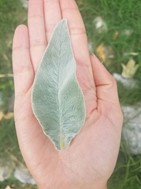 Carnet d’inspiration Naturia
Carnet d’inspiration Naturia
Toilettes sèches ou toilettes à compost
Est-ce que vous savez que 20 à 30% de la consommation d’eau des ménages passe dans nos toilettes ? Et pour la plupart d’entre nous c’est de l’eau potable que nous utilisons à cet effet. C’est aberrant, non ? quand on pense que dans le monde en 2005, plus d’un milliard d’humains n’avaient pas accès à l’eau potable.
Il est donc urgent de proposer et mettre en place des alternatives.
Les toilettes sèches, qui n’utilisent pas d’eau (ou très peu), en sont une et permettent notamment, grâce à la pratique du compostage, de rendre à la terre ce qui en est issu.
Qu’est-ce que c’est ?
Les toilettes sèches ou toilettes à litière bio maîtrisée, sont des toilettes non raccordées à l’eau et aux égouts. On parle aussi de toilettes à compost car les excréments sont récupérés pour faire du compost.
On en retrouve de plus en plus dans les festivals ou dans des lieux publics.
Les avantages sont nombreux :
- Réduction importante de la consommation d’eau potable
- Réduction de la pollution des sols
- Un WC sans les contraintes d’une installation compliquée.
- Pas besoin de raccordement, ni de liaison à l’égout
- Démarche 0 déchet
- Participer à une consommation alternative
- Méthode écologique
- Facile à mettre en œuvre
- Plus de problème de toilettes bouchées
- Evite le gel des canalisations en hiver
- Méthode peu onéreuse & possibilité de la fabriquer soi-même
- Résilience – plus d’autonomie
- Recyclage des nutriments
- Respect du cycle de l’eau et réduction du traitement par les stations d’épuration. L’eau potable est un élément précieux, trop précieux pour être pollué par nos excréments. Les stations d’épuration ne sont pas capables de filtrer tous les résidus toxiques qu’ils contiennent (pesticides, médicaments, toxicité liée à notre consommation etc.).
- Les économies d’eau (une chasse d’eau = 6 à 12 litres à chaque usage soit jusqu’à 3800 litres d’eau par an et par personne)
- Avantage financier
- Création d’un compost riche pour le jardin
- L’urine et les excréments sont riches en phosphore alors que les réserves mondiales sont bientôt épuisées et non renouvelables. L’urine est également riche en azote et potassium
- Les toilettes sèches sont transportables/déplaçables car il n’y a pas la contrainte d’avoir une arrivée d’eau
- Avoir la satisfaction de faire une bonne action pour la planète
Les inconvénients ?
- La logistique que ça suscite : vidage des seaux dans le compost, stockage et acheminement de sciure de bois, entretien etc.
Et question odeurs dans tout ça ?
Il n’est pas censé y avoir d’odeur si les toilettes sèches sont utilisées correctement.
Si la sciure est bien mise après chaque besoin, si celle-ci est bien sèche, le vidage bien réalisé, il n’y aura pas de soucis.
Il y aura donc « juste » l’odeur de la sciure de bois qui sent le cheval pour certains ^^
S’il y a malgré tout des odeurs, elles peuvent-être causées par :
- Le plastique du seau utilisé car c’est une matière qui retient les odeurs, s’imprègne, colore. Le plastique chauffe avec l’urine. Il faut donc opter pour un seau en inox.
- Il est également conseillé de mettre de la cendre avant la sciure (d’ailleurs, certains n’utilisent que de la cendre).
- Notre alimentation jouerait énormément sur les odeurs des excréments (la consommation de viande amplifierait les odeurs)
- Ce sont les urines qui sentent le plus et qui donnent plus de logistique. On peut opter pour un séparateur d’urines.
- La qualité de la sciure va jouer sur les odeurs, de la sciure toute fine et/ou traitée, n’aura pas la même efficacité qu’une sciure dense et clean.
Notre rapport aux excréments
Fèces, excrément, crotte, bouse, poop, bronze, selle, étron, déjection, colombin ou merde… Peu importe comment on le nomme, le caca est un sujet tabou et méconnu. On le qualifie avec vulgarité, on en parle avec humour, mais rarement sérieusement… pourtant il y a tant à dire et à apprendre sur cette matière organique universelle ! Tout le monde défèque, peu importe son rang social, son sexe ou ses croyances !
Son nom change, mais les réactions que la merde suscite sont les mêmes chez la plupart des gens : dégoût, rejet, crainte ou indifférence. Pourtant, les matières fécales font partie de nous et de notre quotidien. Les excréments révèlent notre état de santé et notre régime alimentaire, mais plus encore, notre rapport au corps et à l’intime.
Toilettes individuelles
Oubliez, l’image de la toilette qui ressemble à un trou dans le fond du jardin, la toilette sèche écologique vaut beaucoup mieux que ça!
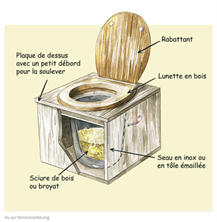
Pas d’odeur grâce aux copeaux de bois, facilité d’utilisation et surtout économie d’eau potable !
On peut passer commande chez un artisan belge, par exemple www.toilette-seche.be ou
Construire sa propre toilette sèche
Voici quelques idées pour une construction maison
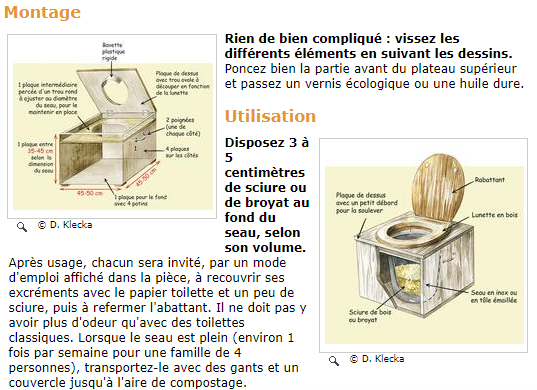
Source https://www.terrevivante.org/198-toilettes-seches-a-compost.htm
Formation en ligne pour apprendre à fabriquer des toilettes sèches
Tutoriels : https://www.youtube.com/watch?v=hACtO12YeL0
Nous ne sommes pas partisans des toilettes sèches en plastique/PVC, toujours pour une question d’écologie.
La sciure ou copeaux ?
La sciure serait plus efficace pour bloquer les odeurs que les copeaux. Elle est également plus pratique pour la manipulation. Les copeaux sont plus intéressants pour les litières des animaux.
Où en trouver ?
On en trouve gratuitement ou à faible coût dans les menuiseries/scieries/ateliers de menuiseries parfois sur le bon coin, magasin de bricolage. Ils sont heureux de pouvoir s’en débarrasser, cela leur évite de tout amener à la déchetterie). On peut aussi en trouver en ligne.
Il faut bien s’assurer qu’il ne s’agisse pas de bois traité, il serait dommage de mettre cela au compost.
Séparer ses urines ?
L’urine apporte beaucoup de minéraux et est très riche en phosphore, azote (urée qui est un très bon engrais) et potassium. Elle peut être versée directement au jardin, au pied des arbres, arbustes, au potager. Mais pour cela, il faut attendre qu’elle refroidisse car les plantes n’aiment pas la chaleur.
Donc messieurs n’hésitez pas à azoter les haies, en toute discrétion bien entendu !
Séparer ses urines permet aussi de limiter la consommation de sciure.
Petite vidéo sur ce sujet https://www.youtube.com/watch?v=4SZasMQH9yU
Toilettes collectives
Elles permettent de réduire la pollution environnementale ainsi que la consommation d’eau des foyers. Mais leur plus grand intérêt ? La possibilité de réaliser un compostage des déchets afin d’obtenir de l’engrais.
Le compostage
Il convient de vider le seau dans un bac à compost spécialement dédié. Donc les toilettes sèches ne se vident pas dans les bacs de compost avec les déchets de jardin et maison !!
Versez le seau dans un des bacs garnis de matériaux secs riches en carbone (broyat, paille, feuilles et herbes sèches). Étalez avec une pelle, et recouvrez des mêmes matériaux. Rincez le seau et la pelle au jet, au-dessus du bac. Une fois plein, le bac sera vidé pour former un tas. Il ne sera utilisé qu’après un an et demi à deux ans de compostage et trois ou quatre retournements. La montée en température qui suit l’élaboration du tas ainsi que la durée de maturation garantissent l’absence de germes pathogènes. Quand on ne maîtrise pas encore très bien le compostage, on peut réserver ce compost aux arbres et arbustes ainsi qu’au jardin d’ornement (évitez en tout cas les légumes à croissance rapide qui se consomment crus). N’en abusez pas, il est très riche.
A Naturia, nous tournerons avec 3 tas de compost pour mieux s’y retrouver et respecter les deux ans d’attente. Un tas/bac de compost de décomposition pour l’année en cours ; un deuxième tas/bac de maturation pour l’année d’avant et un troisième de maturation pour l’année encore d’avant de façon à ce que cela fasse 2 ans pleins. Il faut penser à le retourner tous les ans.
Affiches que vous retrouverez dans les toilettes mises à votre disposition :
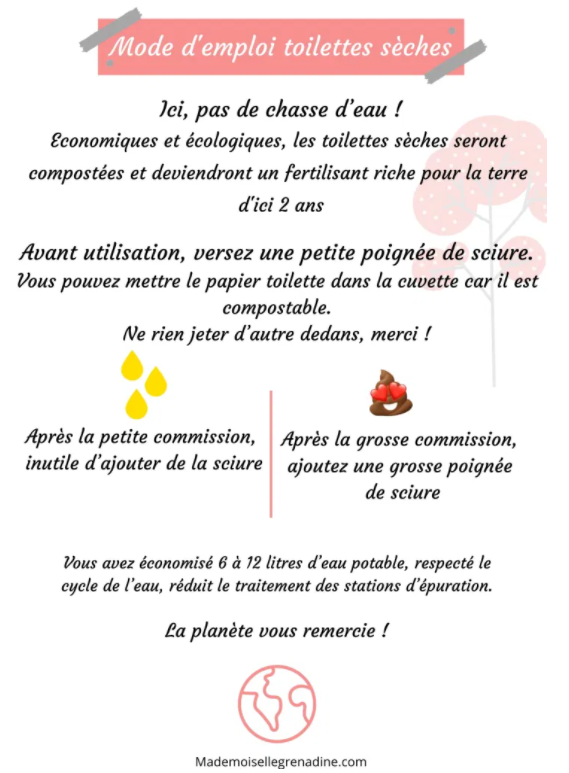
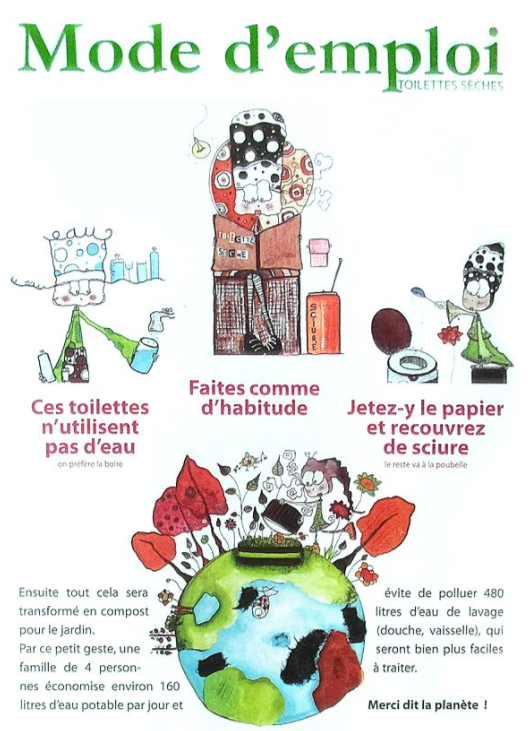
Le papier toilette
Et si on a envie de faire un pas de plus…
Le saviez-vous ? Un Européen consomme près de 120 rouleaux de papier toilette en moyenne chaque année, soit environ 13 kilos de papier qui pour une grande partie n’est pas recyclé
Plein de solutions s’offrent à nous :
- Se tourner vers du papier toilette non blanchi (et donc sans chlore), recyclé. On en trouve facilement en magasin bio. Il pourra donc aisément être mis au compost
- Prendre un gant/lingette lavable ou une bouteille d’eau ou les deux
- Pour les plus téméraires, certains végétaux peuvent être une bonne alternative au papier toilette comme des feuilles d’arbre (le noisetier, sa feuille est toute douce !)
Voici un extrait intéressant trouvé dans cet article
« Au Moyen-âge, en Europe, on utilisait de la feuille de marronnier. Aux Etats-Unis, on utilisait la grande molène (dit aussi bouillon blanc), surnommée “Cowboy Toilet Paper” littéralement le papier toilette des Cowboy. L’Aster à grande feuille communément appelée “Lumberjack Toilet Paper”, soit le papier toilette des Bûcherons était aussi utilisé. En Afrique, c’était principalement la feuille du Coleus forskohlii qui était utilisée. D’ailleurs, Rob Greenfield célèbre écologiste américain qui vit sans papier toilette industriel depuis plus de 5 ans, a adopté cette plante qui a la particularité d’avoir une texture particulièrement duveteuse. Au Kenya, dans les zones rurales, ses feuilles sont d’ailleurs encore utilisées en tant que telles aujourd’hui. En raison de la souplesse de ses feuilles, les gens l’utilise également en tant que mouchoir. »
Récapitulatif en images :
La feuille de marronnier, la feuille de noisetier, la feuille de grande molène (ou bouillon blanc), la feuille d’aster à grande feuille, la feuille du coleus forskohlii.
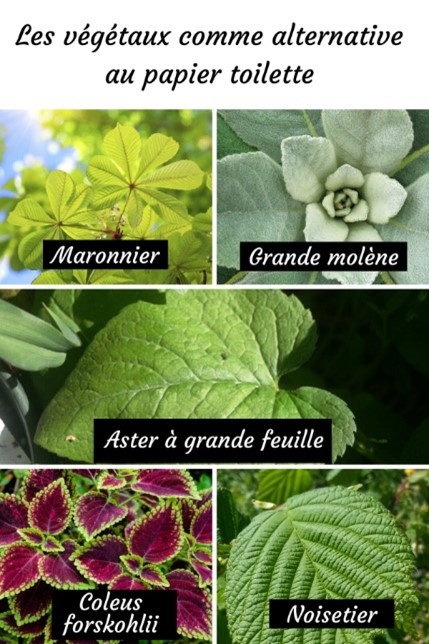
Il y a encore une autre plante : « Epiaire laineuse » qui a vraiment des feuilles toutes douces !
